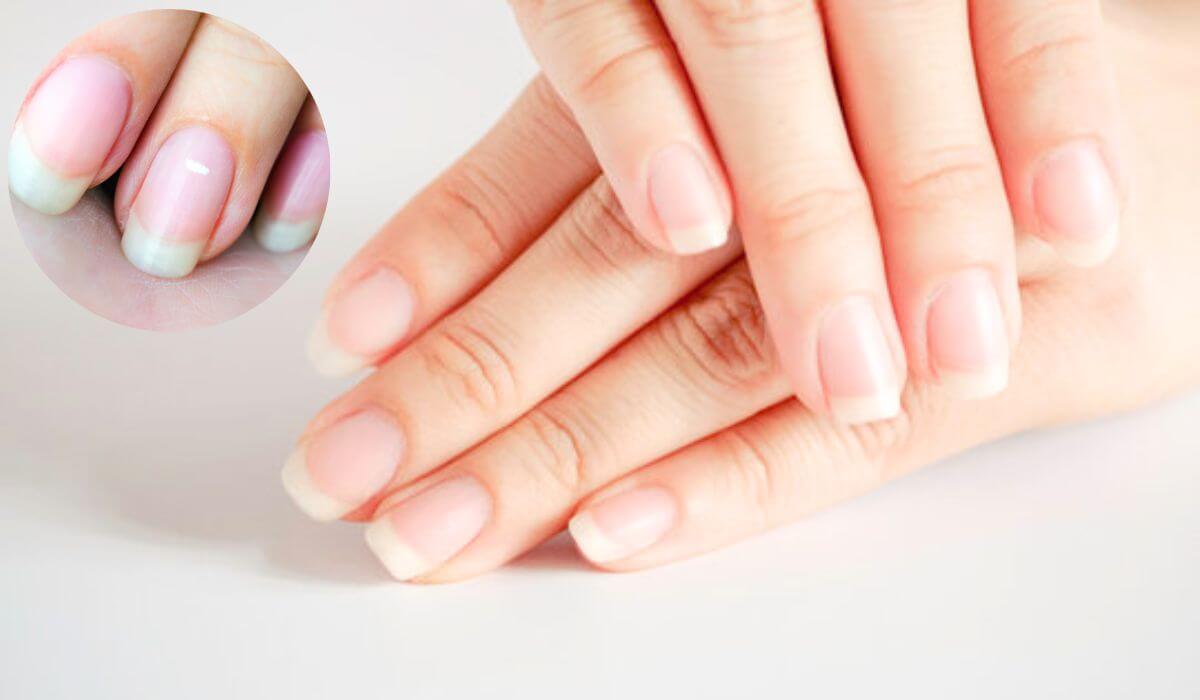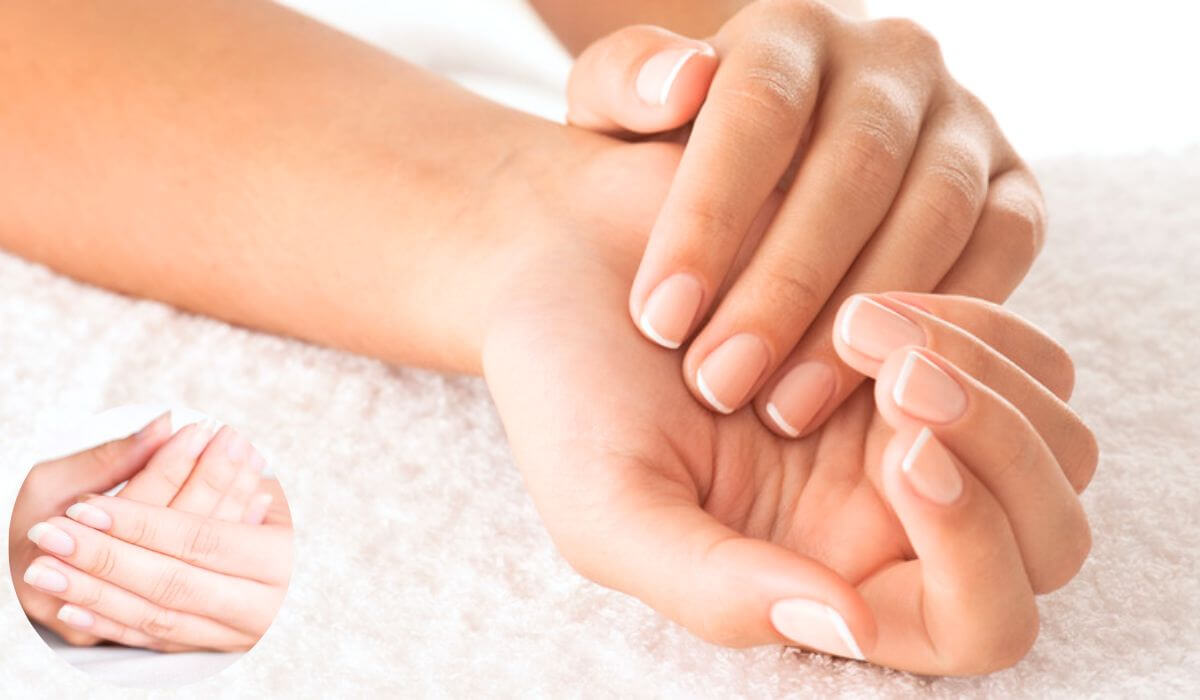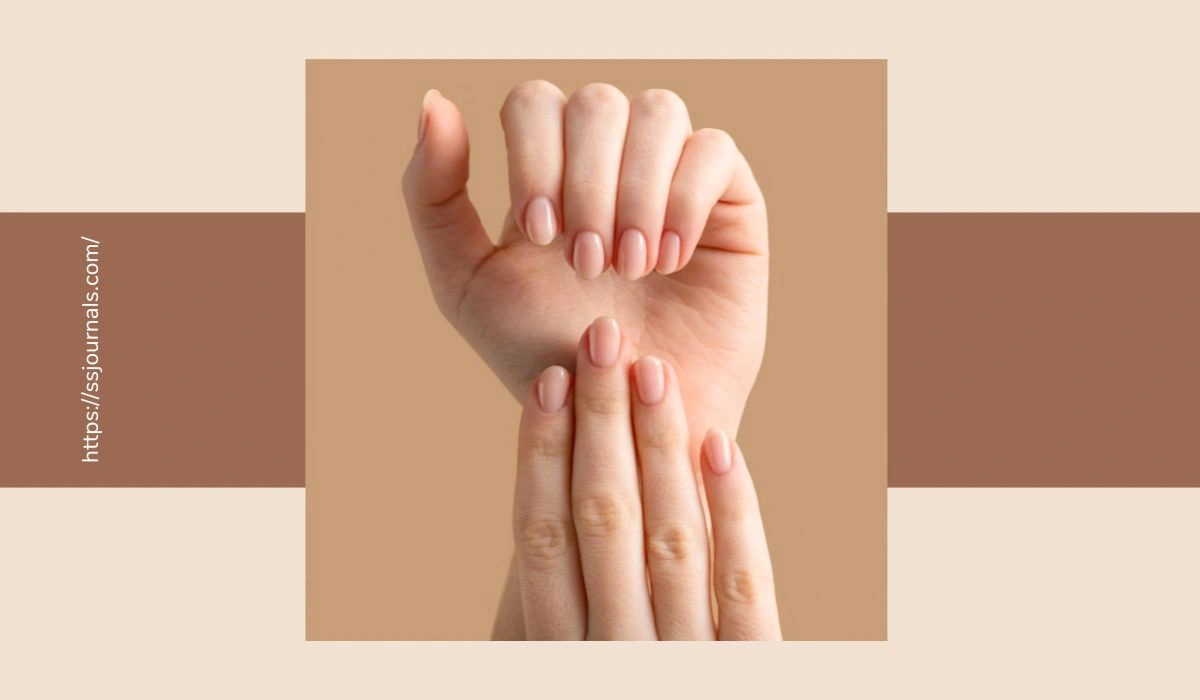Fingernails act as a protective shield for your finger tops from injury. Pink-colored nails generally manifest the health of your nails, but discoloration, thickening, white spots, and ridges happen for a variety of reasons like changes in lifestyle and nail injury, according to Christal Landeros, DO, a family medicine physician.
Texture Changes
- Thin Or Soft Nails
Thin or soft nails tend to peel, split or break off easily. Exposure to chemicals, detergents, and moisture often causes this. Shortage of Vitamin B, calcium, or iron is also the culprit behind this damage.

- Cracked Or Split Nails
Dry or very brittle nails are subjected to break or crack easily. To your surprise, nails become dry by soaking them frequently in the water during dish wash, bathing, or swimming.
Chemicals contained in nail polish removers and alcohol-based sanitizers also hand out for making nails dry.
Dry cracked nails are also a sign of thyroid disease if the problem persists for a longer period.
- Peeling Nails
Nails often get peeled off in layers as a result of traumatic experiences: using nails as a tool to open hard packings, cleaning hard surfaces, or scaping old nail polish.
- Pitted Nails
Pitted nails are indicated by tiny indentations that sometimes suggest conditions including psoriasis or alopecia areata, an autoimmune disease that causes hair loss. Psoriasis is characterized by dry scaly skin patches.
- Spoon Nails
Spoon nails, if the nails look scooped up like a spoon, indicate anemia, hypothyroidism, or liver complications.
- Ridges Or Ripples
On checking your nails you find lines that run lengthwise and sometimes horizontal or grooves too. Horizontal lines suggest stopping or slowing down your nail growth whereas lengthwise lines are harmless and usual.
Generally diagnosed reasons for this are high fever, stress, damage to the cuticle or base of the nail, and some medications. Besides, diabetes and peripheral cardiovascular diseases also can cause ridges or ripples. Better to consult a doctor if the problem persists longer.
- Curved Nails
Lung disease, inflammatory bowel disease, cardiovascular disease, or liver disease may cause curved nails if it is not inherited or developed as a gradual process when the fingertips enlarge and nails get curved around them.
- Ram’s Horns
Overgrown nails that resemble the horns of a ram can be attributed to hereditary factors or conditions including psoriasis etc.
- Nail Separate From The Nailbed
Usually, due to injury or infection, nails get separated from the nailbed. Being tender and painful the detached nails turn white with a tinge of yellow or green.
Sometimes a separated nail may be caused by Psoriasis or other illness. It can be diagnosed with the help of a physician.
Discoloration And Color Changes
- Pale Nails
Pink nails indicate your health whereas very pale nails suggest illness including anemia, congestive heart failure, or liver disease.
Malnutrition also becomes a cause of pale nails sometimes. A diagnosis is required to determine in such cases.

- White Spots
Random white spots, due to injury or trauma on your nails, are not harmful but in other cases, the reason may be zinc deficiency, fungal infection, or allergic reaction.
- Blue Nails
Emphysema, heart disease, and less supply of oxygen to the body cause the nails to take a bluish tinge. If you are already experiencing oxygen deficiency conditions consult your doctor to check it.
- Yellow Nails
It’s very common to find nails become yellow due to several reasons. Smoking, infection, and dark nail polish stains are some of those reasons.
If your nail is getting thickened, crumbled, or detached from the nail bed it might be due to a fungal infection. Rheumatoid arthritis, respiratory disease, and thyroid disease are more serious conditions that cause yellow nails.
- Dark Lines Under The Nails
Sometimes, dark lines that appear under the nails indicate melanoma, a grave type of skin cancer. Have a consultation with a physician to check out this.
Also Read: How To Get Glowing Skin Naturally In A Week? 5 Easy Ways

